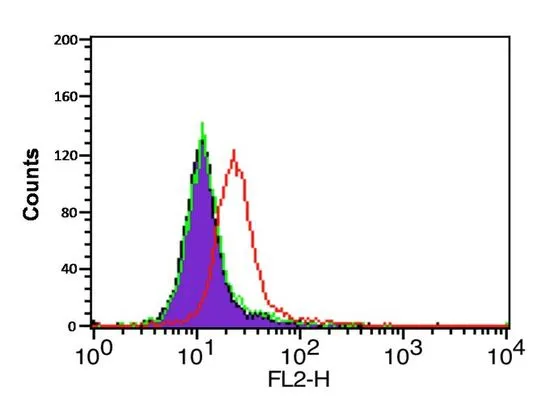
FACS analysis of HeLa cells using GTX22074 CXCR4 antibody. Working concentration : 0.1 microg/ml Purple: cells without staining Green: Isotype control Red : CXCR4 antibody
CXCR4 antibody
GTX22074
ApplicationsFlow Cytometry, ImmunoFluorescence, Western Blot, ELISA, ImmunoCytoChemistry, ImmunoHistoChemistry, ImmunoHistoChemistry Frozen, ImmunoHistoChemistry Paraffin, Neutralisation/Blocking
Product group Antibodies
TargetCXCR4
Overview
- SupplierGeneTex
- Product NameCXCR4 antibody - KO/KD Validated
- Delivery Days Customer9
- Application Supplier NoteWB: 1-2 microg/mL. ICC/IF: 2-20 microg/mL. IHC-P: 5 microg/mL. FACS: 0.1 microg/mL. *Optimal dilutions/concentrations should be determined by the researcher.Not tested in other applications.
- ApplicationsFlow Cytometry, ImmunoFluorescence, Western Blot, ELISA, ImmunoCytoChemistry, ImmunoHistoChemistry, ImmunoHistoChemistry Frozen, ImmunoHistoChemistry Paraffin, Neutralisation/Blocking
- CertificationResearch Use Only
- ClonalityPolyclonal
- Concentration1 mg/ml
- ConjugateUnconjugated
- Gene ID7852
- Target nameCXCR4
- Target descriptionC-X-C motif chemokine receptor 4
- Target synonymsCD184, D2S201E, FB22, HM89, HSY3RR, LAP-3, LAP3, LCR1, LESTR, NPY3R, NPYR, NPYRL, NPYY3R, WHIM, WHIMS, WHIMS1, C-X-C chemokine receptor type 4, CD184 antigen, LPS-associated protein 3, SDF-1 receptor, chemokine (C-X-C motif) receptor 4, fusin, leukocyte-derived seven transmembrane domain receptor, lipopolysaccharide-associated protein 3, neuropeptide Y receptor Y3, neuropeptide Y3 receptor, seven transmembrane helix receptor, seven-transmembrane-segment receptor, spleen, stromal cell-derived factor 1 receptor
- HostRabbit
- IsotypeIgG
- Protein IDP61073
- Protein NameC-X-C chemokine receptor type 4
- Scientific DescriptionThis gene encodes a CXC chemokine receptor specific for stromal cell-derived factor-1. The protein has 7 transmembrane regions and is located on the cell surface. It acts with the CD4 protein to support HIV entry into cells and is also highly expressed in breast cancer cells. Mutations in this gene have been associated with WHIM (warts, hypogammaglobulinemia, infections, and myelokathexis) syndrome. Alternate transcriptional splice variants, encoding different isoforms, have been characterized. [provided by RefSeq, Jul 2008]
- Storage Instruction-20°C or -80°C,2°C to 8°C
- UNSPSC12352203
References
- CXCL14 promotes metastasis of non-small cell lung cancer through ACKR2-depended signaling pathway.Read more
- Clinicopathological and Preclinical Patient-Derived Model Studies Define High Expression of NRN1 as a Diagnostic and Therapeutic Target for Clear Cell Renal Cell Carcinoma. Kamada S et al., 2021, Front OncolRead more
- Experimental Study on the Effect of Allogeneic Endothelial Progenitor Cells on Wound Healing in Diabetic Mice. Leng M et al., 2021, J Diabetes ResRead more
- Potential Anticancer Effect of Celastrol on Hepatocellular Carcinoma by Suppressing CXCR4-related Signal and Impeding Tumor Growth in Vivo. Kun-Ming C et al., 2020 May, Arch Med ResRead more
- ALDH1A3 affects colon cancer in vitro proliferation and invasion depending on CXCR4 status. Feng H et al., 2018 Jan, Br J CancerRead more
- Intraductal papillary mucinous neoplasm of the pancreas rapidly xenografts in chicken eggs and predicts aggressiveness. Zhao Z et al., 2018 Apr 1, Int J CancerRead more
- Aspirin counteracts cancer stem cell features, desmoplasia and gemcitabine resistance in pancreatic cancer. Zhang Y et al., 2015 Apr 30, OncotargetRead more
- Inhibition of glucose turnover by 3-bromopyruvate counteracts pancreatic cancer stem cell features and sensitizes cells to gemcitabine. Isayev O et al., 2014 Jul 15, OncotargetRead more
- The aryl hydrocarbon receptor ligand omeprazole inhibits breast cancer cell invasion and metastasis. Jin UH et al., 2014 Jul 9, BMC CancerRead more

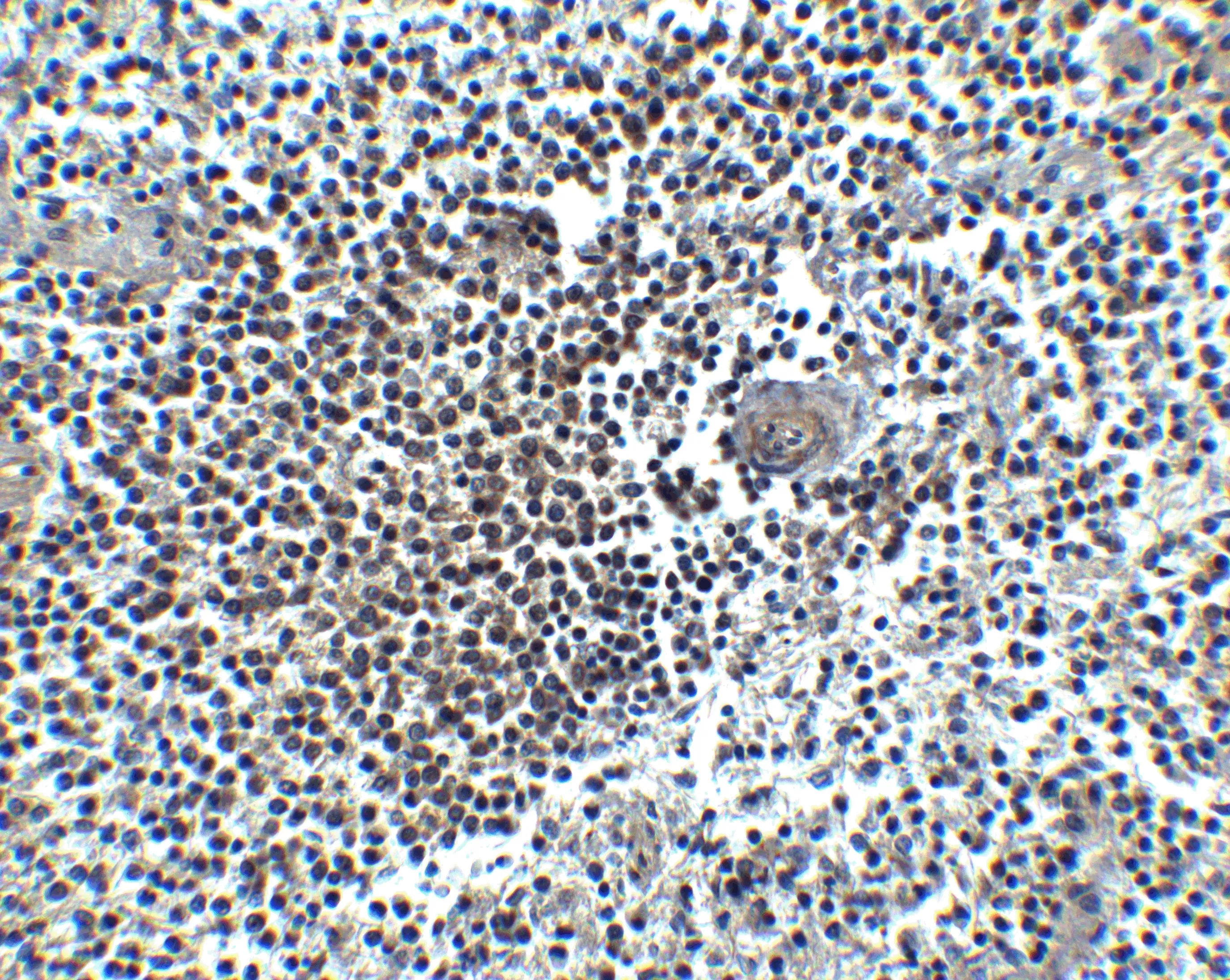
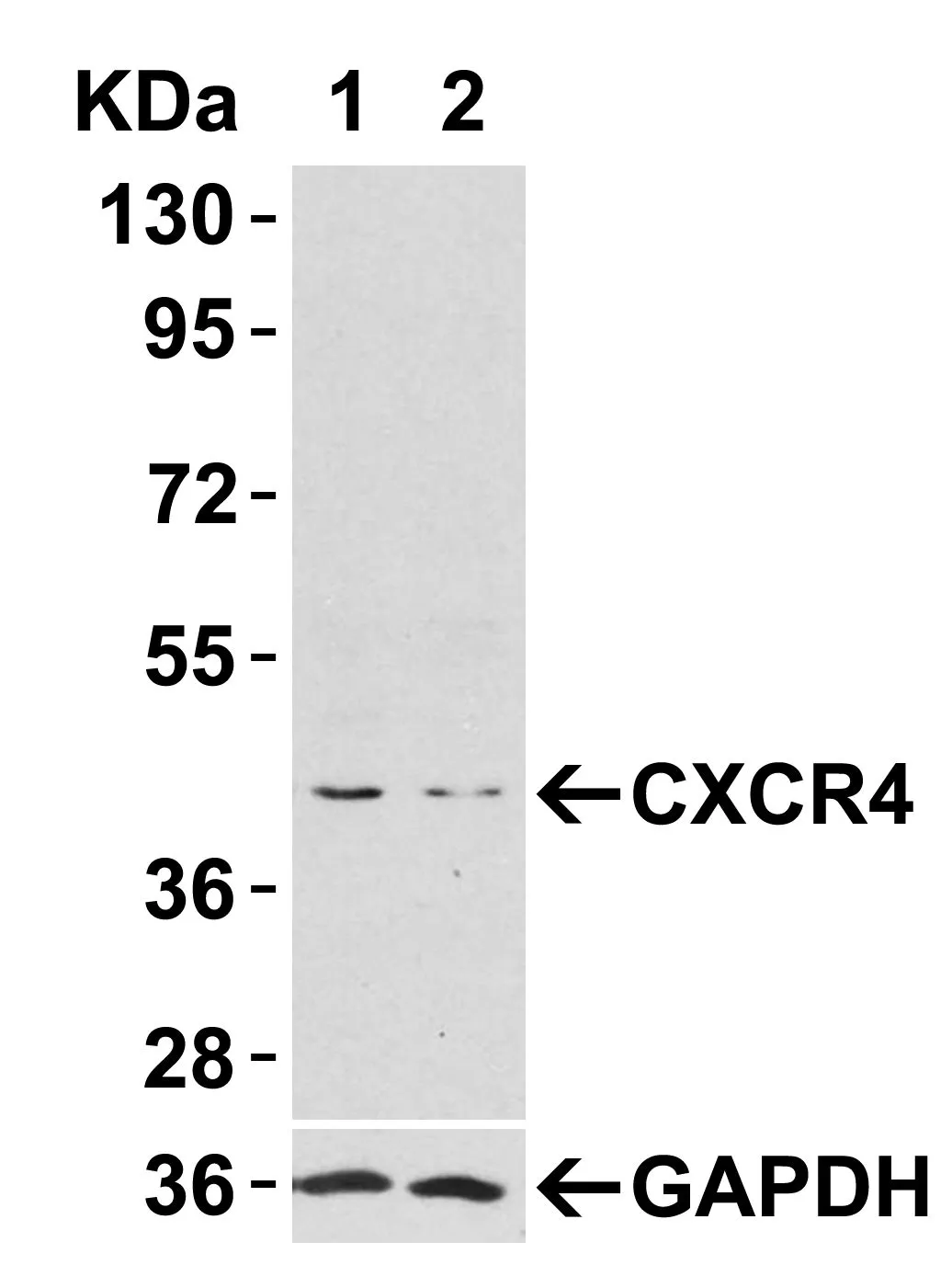
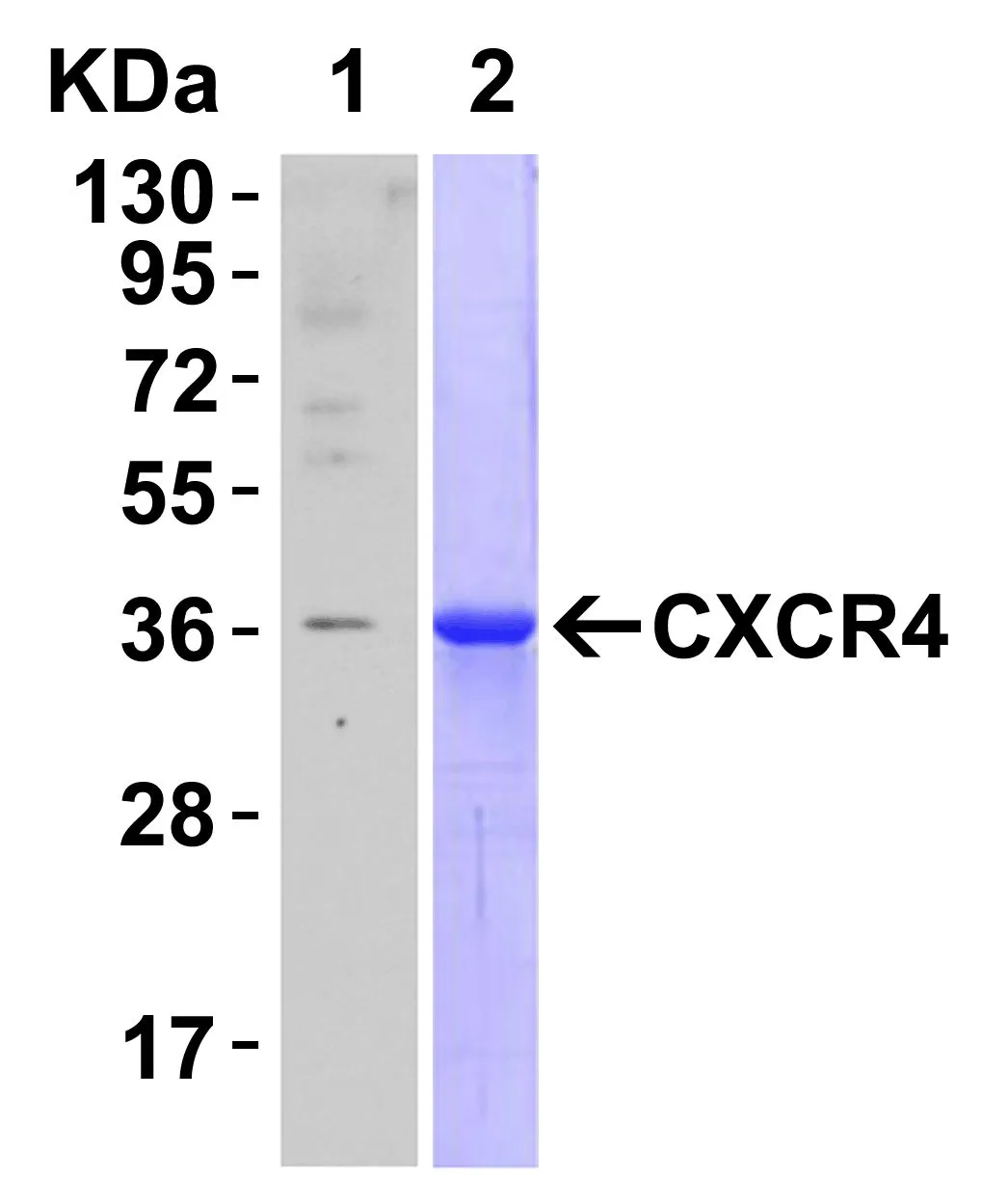

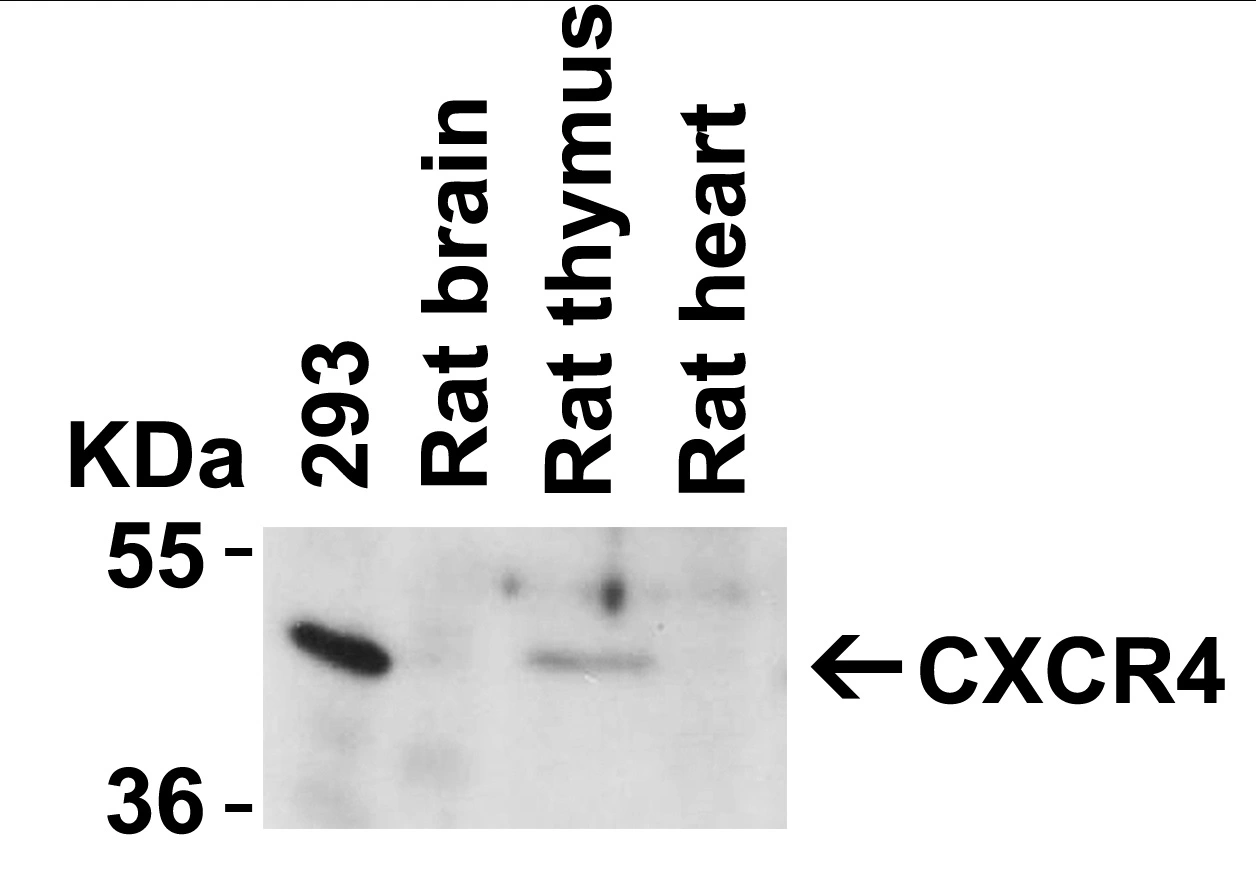

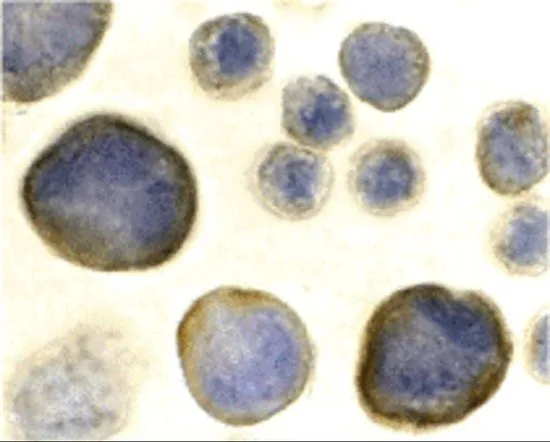
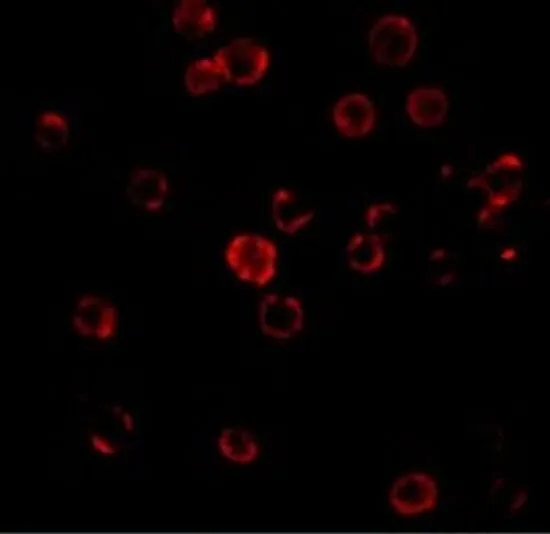

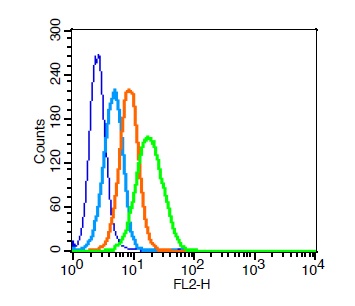

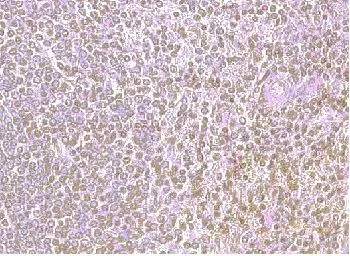
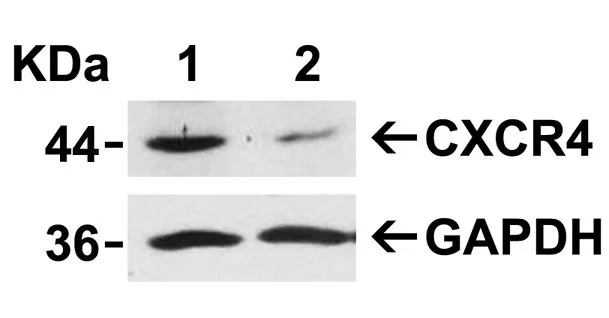
![FACS analysis of human peripheral blood leukocytes using GTX00549-08 CXCR4 antibody [12G5] (PE).](https://www.genetex.com/upload/website/prouct_img/normal/GTX00549-08/GTX00549-08_20191025_AP_006_87_w_23053121_175.webp)